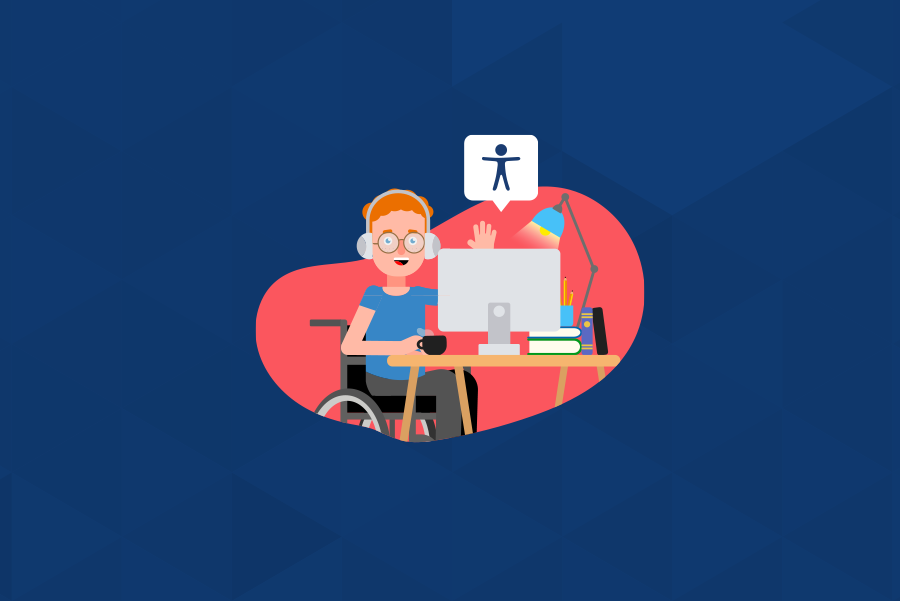
Home Office is here to stay. And accessibility, how does it work?

Most likely you’ve heard about the famous “Home Office”, or “remote work”, right? But if you still don’t or don’t know how it works, don’t worry, that’s what we’re going to tell you about here!
Since 2020, in the beginning of the Covid-19 pandemic, this is one of the Top10 topics in the corporate world. As it is a solution for both productivity and social isolation, because it allows people to carry out their activities from anywhere, only having access to the internet and a portable device. And this tendency is here to stay!
The benefits of the Home Office are countless, but is this work format accessible to everyone?
Unfortunately, the answer is no! It is essential that all necessary adaptations are made for the execution of remote work, thinking about accessibility first, so that professionals with and without disabilities can comfortably carry out the same activities they performed in the physical work environment.
People with disabilities and the Home Office
If providing accessibility for the staff is not one of the priorities of the companies, people with disabilities will face many challenges! This is because the digital environment has numerous barriers for them.
A great exemple is when videoconferencing meetings take place without the presence of ASL (American Sign Language) interpreters. This makes deaf and hard of hearing people unable to participate.
Another one is when the videoconference platform is not compatible with screen readers. In this case, blind people or people with low sight will not receive the visual information transmitted by slides or other visual aids during the meetings.
Also, most of the websites are failing the accessibility tests, which means most of the web is not accessible for those people.
In other words, the online work routine of these people becomes an even greater challenge if companies are not alert to provide the necessary assistance.
On the other hand, staying at home can also bring some benefits and comforts. People with physical or motor disabilities, who need accessibility for locomotion and for carrying out their activities with more autonomy, can be more comfortable in their homes, that probably already have the resources they are used to. In addition, many companies do not have architectural accessibility to receive them in their physical structures, especially when it comes to small and medium-sized companies, what makes the hiring process more difficult. With the Home Office growth, many doors and opportunities were opened, which increased the number of employees hired.
How to reduce the negative impacts of the Home Office?
Well, there are good practices for that. The company responsponsible must provide some accessibility solutions, whether it is digital, instrumental or architectural. It depends on the need. Here are some examples:
- Ensure that the company is using communication channels compatible with screen readers, which are software that convert texts into audio, allowing people who are blind or with low sight to capture visual information. Zoom is a good option for this matter;
- Provide equipment and adaptation devices for using the mouse, keyboard, or browser, enabling people with cerebral palsy or motor disabilities to use the devices independently;
- Ensure the availability of a ASL interpreter or subtitles during videoconferences, providing accessibility for deaf or hard of hearing people;
- Adopt “dailys”, to follow closely the activities carried out by these people and checking if it is possible to make their work more accessible;
- Collecting feedback from people with disabilities to build a work model that meets their needs. “Nothing about us without us”. It is important that these people express their real challenges in performing their tasks and don’t only let the company say what is best for them.
- Require the companies to comply with the digital accessibility laws.
In a world that is constantly changing and where remote work is increasingly common, prioritizing digital accessibility is urgent to break down the most diverse existing barriers and ensure the inclusion of people with disabilities.
Your organization can take these steps and many others to create a healthier work environment for your employees. Learn more in our Blog.


